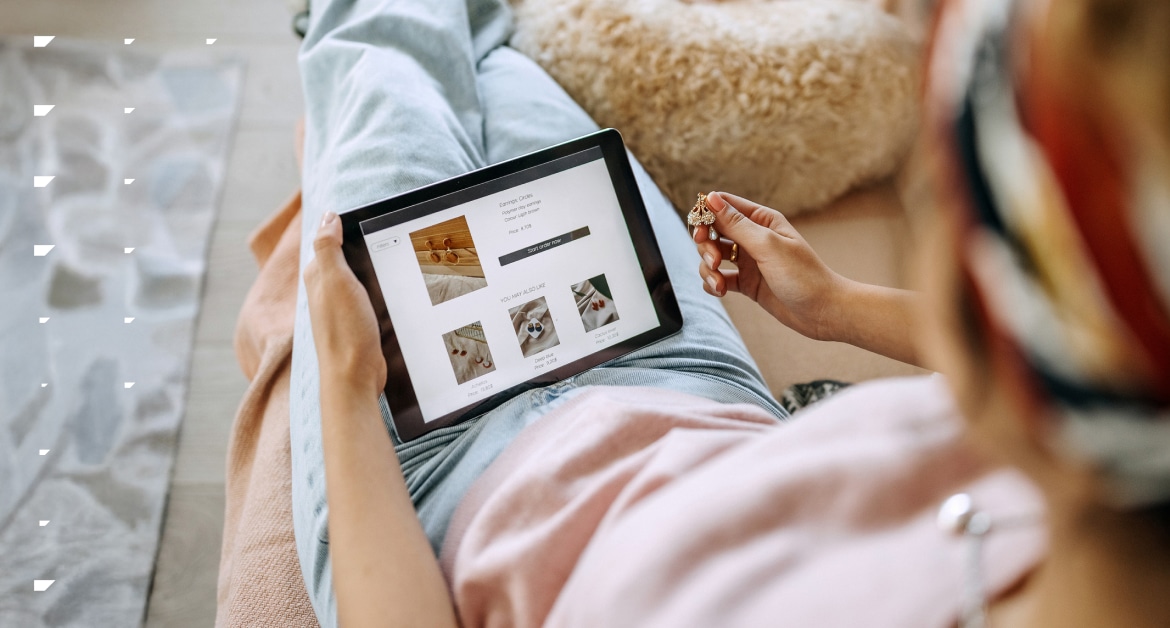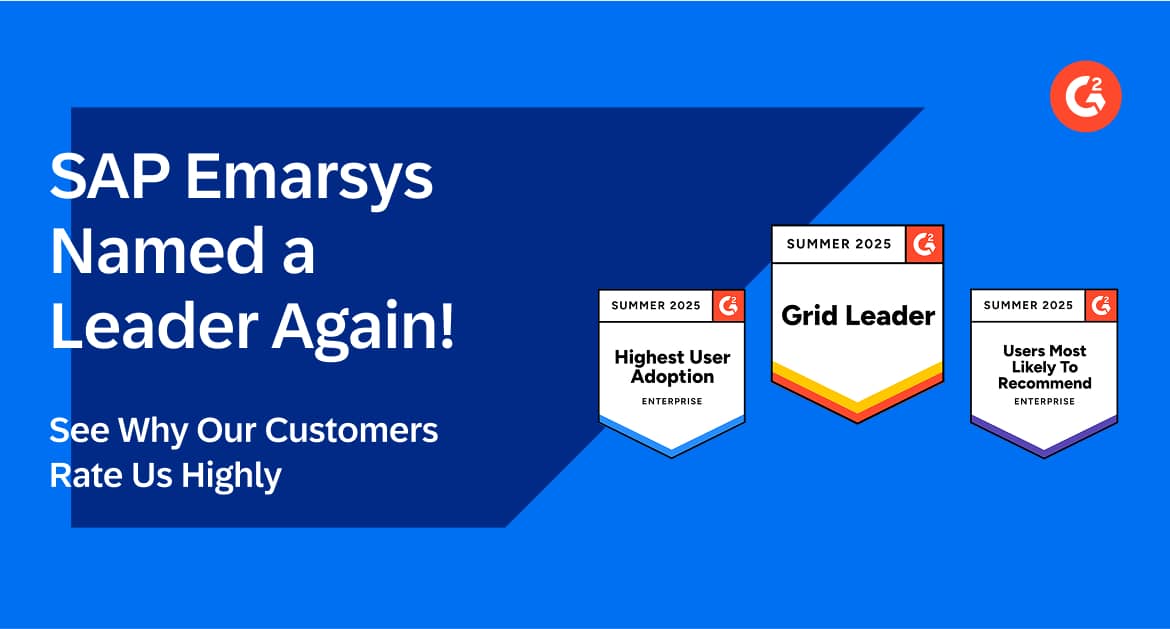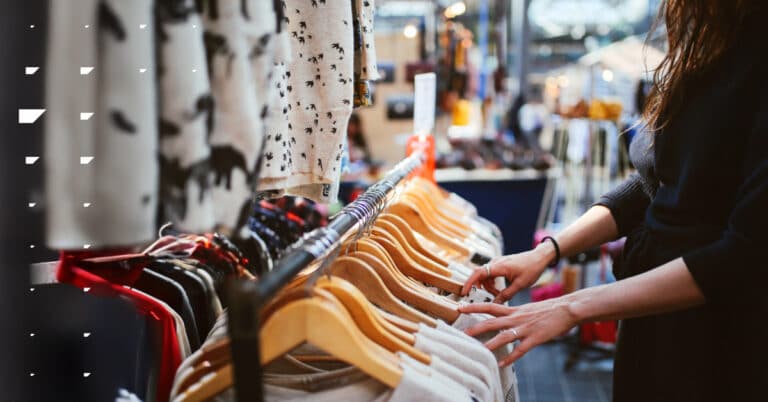Long gone are the days of batch-and-blast, mass messaging. Today, if you want to engage your retail customers, you need to be ready to meet them where they’re spending their time, with content tailored not just to that channel, but also to their individual interests and behaviors. Omnichannel marketing is the key to making this happen.
Omnichannel marketing is a multi-channel sales approach that provides the customer with an integrated, seamless and personalized experience, whether they’re shopping online from a desktop or mobile device, via phone, or in your brick-and-mortar store.
In return for creating these experiences, your customers will reward you with repeat purchases, loyalty, and even advocacy through organic referrals – all vital elements of sustainable retail and e-commerce growth.
In this article, we’ll share 8 omnichannel retail examples from some of the best and brightest brands, to help inspire your own engaging retail experience.
Benefits of Creating an Omnichannel Retail Experience
By investing in omnichannel retail, you open your business to several key advantages that drive long-term growth:
Get a deeper understanding of your customers
Imagine having a clear, complete picture of your customers—a single view that shows you what they love, where they shop, how they prefer to interact, and what motivates their choices. By connecting all your channels and unifying your data, this becomes possible.
An omnichannel approach provides you with valuable data by tracking your customers’ interactions across every touchpoint with your brand.
When you understand your customers at this level, you’re able to deliver the kind of consistent, personalized experiences that make them feel valued and keep them coming back for more.
With this knowledge, you can fine-tune your marketing efforts, adjust your inventory to match demand, and vastly improve your customer service. All of this leads to better performance, not just for your marketing campaigns, but for your business overall.
Achieve higher engagement rates with personalized content
With omnichannel retail, your customers will engage with you more, more often. This is because an omnichannel marketing approach ensures your customers can interact with your brand on any platform – because you’ll be present wherever your customers are spending their time.
By leveraging the data that an omnichannel customer engagement platform helps you unlock, you’ll be able to create 1:1 personalized experiences. These are tailored to each customer, because they’re based on an intimate understanding of what each customer wants. By cutting out the fluff, your content will stand out in a sea of spam-filled inboxes and cluttered social feeds.
When 31% of customers cite personalized shopping experiences as the reason they stay engaged and loyal to a brand, omnichannel marketing is a truly valuable strategy.
Increase your customer loyalty and retention
By delivering consistent, personalized experiences across your key marketing touchpoints, you give your customers another reason to keep coming back.
When a customer’s product affinities and shopping preferences are recognized, whether they shop in-store or online, they’ll start to feel more connected to your brand. Over time, this begins to foster loyalty, where your customers instinctively choose your products over competitors’.
However, customer loyalty can mean much more than repeat purchases. When recognized and cultivated, customer loyalty can transform into something much greater – customer advocacy. In fact, our research found that 47% of consumers demonstrate their loyalty by referring brands to friends and family, giving you an invaluable opportunity to tap into new customer bases.
8 Examples of the Best Omnichannel Retail Experiences in Action
Looking for some omnichannel retail inspiration? In these omnichannel retail examples, examine how some of the world’s leading brands deploy an omnichannel approach to activate their data and deliver seamless, cross-channel customer experiences:
1. Disney creates a magical customer experience with seamless digital integration
Disney is a brand that makes it easy for consumers to feel a connection. The company is built around imagination and creation, so it is no surprise that they are leading the way in the realm of omnichannel marketing.
Disney’s omnichannel retail experience:
Disney’s experience is all in the details. Every piece of their website is mobile-responsive and optimized to every device. After a visitor has booked their Disney World resort visit, they can plan every minute of their trip through the My Disney Experience tool. In the park, they can use the mobile app to locate attractions they earmarked in the experience tool and see estimated wait times for each attraction.
This year, Disney introduced their Magic Band program. It’s a brilliantly executed weapon in Disney’s omnichannel arsenal. Disney World and Disneyland visitors can enter the parks, unlock their hotel rooms, check in to FastPass lanes, connect to their Disney PhotoPass account, and charge all purchases made in the park to their Magic Band. And of course, all of this is linked with the My Disney Experience account, accessible through the mobile app.
Bravo, Disney. Bravo.
Why it works:
Disney creates a cohesive, immersive experience that strengthens emotional connections, driving customer loyalty. The focus on seamless transitions between digital and physical interactions ensures convenience and personalization at every stage of the customer journey.
Disney Theatrical Group: Adapting Content for Multiple Channels
Beyond the magic of their theme parks, media, and broadway shows, Disney’s success is built on their approach to channel-specific content.
Disney knows its core marketing channels are fundamentally different. They’re consumed by their guests differently, so why should the content they distribute be the same? Nick Falzon, VP Sales and Analytics at Disney Theatrical Group, shared his insights on this at Power to the Marketer:
Disney Theatrical Group: Adapting Content for Multiple Channels – Power To The Marketer Shorts
2. Starbucks boosts customer engagement with personalized rewards and an app-driven experience
Starbucks is frequently revered as an omnichannel savant. The coffee company seems to be on every corner nowadays. Why? Because they are doing a whole lot of things – and they’re getting them all right.
Starbucks’ omnichannel retail experience:
Starbucks does an excellent job providing a seamless user experience. Every time a Starbucks user pays with a Starbucks card, via a physical card or mobile, that user accumulates reward points. The linked app also allows the coffee drinker to find stores near them, send gifts, order drinks ahead of time for a quicker purchase experience, view new additions to the menu. And, with the recent Spotify integration, consumers can view what songs are playing in that specific store and add them to their playlists.
The omnipresent coffee chain has nailed the omnichannel approach, delivering a seamless, connected experience that’s as engaging as it is easy to use. This is the key principle of omnichannel. As explained by Misia Tramp, EVP Insights and Innovations for Tahzoo:
“Omnichannel involves using data to understand where effort exists in the customer experience and how to remove – rather than add – effort.”
Why it works:
Starbucks integrates multiple channels effortlessly, making it easy for customers to engage with the brand no matter where they are. The use of data ensures a personalized, smooth experience that removes customer friction, a key principle of effective omnichannel strategies.
3. PUMA unlocks 5x email revenue growth through data unification and personalized marketing automations

From sneaker heads to sports enthusiasts, PUMA caters to a varied global audience of millions of customers.
PUMA’s omnichannel retail experience:
Before partnering with Emarsys, PUMA would send a standard newsletter to their email database once a week. This content wasn’t personalized to each recipient, PUMA didn’t have segmentation capabilities in place, and their in-store and online data was siloed, so they couldn’t act on the full data picture they had.
So, they devised a plan to unify their data and deliver the right message, to the right customer, at the right time to help them capitalize on the significant e-commerce and retail opportunities in front of them.
By implementing the SAP Emarsys Customer Engagement platform, PUMA unveiled key insights into their customer lifecycle and what made their customers tick. This enabled them to launch sophisticated, personalized marketing automations that unlocked the true revenue potential of their customer base.
The result? In 6 months, they drove 5x revenue from email, +25% open rates, 50% database growth, and 10x weekly subscribers. Now that’s a win.
Why it works:
PUMA’s previous marketing efforts lacked personalization and data integration. By unifying their data and leveraging smart segmentation, they now deliver personalized messages at the right time, to the right customer, significantly boosting engagement and revenue.
4. Sephora builds customer loyalty with personalized beauty experiences
Sephora is another brand brought up time and time again for the brilliance behind their omnichannel customer experience. We have even touted Sephora before and applauded their Beauty Insider Rewards program as a means for stronger relationships between consumers and the brand.
Sephora’s omnichannel retail experience:
Sephora Beauty Insiders can tap into the Beauty Bag on their phone or desktop and have access to a truckload of data. Consumers can shop, see their favorites list, any of their past purchases, and how many rewards points they have, scan items in store to see other options available online, watch tutorial videos, and find a store near them.
This extremely successful omnichannel shopping experience has nurtured 11 million members, who spend 15 times more money on Sephora.com than the average user.
Why it works:
Sephora’s omnichannel approach creates a seamless experience for customers both online and in-store. By integrating customer data across platforms, they offer personalized recommendations, track purchases, and enhance engagement through their rewards program, building long-term customer loyalty.
5. Crate & Barrel increases revenue with cross-device shopping

Source: Crate & Barrel
Crate & Barrel homed in on the fact that many consumers toggle through several different devices before completing purchases. In order to capitalize on this consumer behavior, Crate & Barrel implemented an omnichannel approach.
Crate & Barrel’s omnichannel retail experience:
Whenever a consumer is logged into their account, the app saves their shopping cart and browsing data so they can access this information across multiple devices. This new implementation has allowed consumers to take up where they left off in the shopping process, and Crate & Barrel has reaped great returns.
In fact, Crate & Barrel’s implementation of an omnichannel customer experience strategy resulted in a 10% revenue increase from the newly improved mobile and web stores. Further pushing themselves along the path of innovation, Crate & Barrel released their 3D Room Designer feature, allowing consumers to virtually place any Crate & Barrel item into their home before purchasing.
Crate & Barrel also recognized the importance, influence, and impact the holiday season had for their customers. To allow their audience to shop products specific to their faiths, Crate & Barrel updated their website to include collections for Hanukkah and Christmas.
Why it works:
Crate & Barrel’s omnichannel approach focuses on convenience and personalization, allowing customers to seamlessly pick up where they left off across devices. This frictionless experience enhances customer satisfaction and encourages higher conversions, driving significant revenue growth.
6. Walgreens enhances in-store experiences with a mobile-first approach



Source: Walgreens iOS app
Forbes recently highlighted Walgreens’ mobile retail app as one of the highest regarded in the US. Its success can be attributed to the omnichannel strategy implemented by the pharmaceutical retail giant.
Walgreens’ omnichannel retail experience:
The app allows users to manage their pharmacy prescriptions, fill out rapid refill requests, find deals on products in the stores, and make orders that they can pick up at the nearest location. While this is a mobile-focused shopping experience, the app is actually oriented toward improving a user’s in-store experience. This is the brilliance behind Walgreens’ strategy.
Why it works:
Walgreens’ omnichannel strategy enhances the in-store shopping experience by leveraging mobile technology. While the app provides convenience for mobile users, its primary purpose is to improve and streamline the in-store experience, making it a perfect example of how omnichannel can bridge the digital and physical worlds.
7. Pizza Hut boosts loyalty with personalized rewards and data insights

Pizza Hut is a global brand with a network of over 380 franchisee-owned restaurants. But no matter how they sliced it up, they still fell into the same trap of many large brands – sending only batch-and-blast email communications to their subscriber base, with no personalization and differentiation between them.
And in the uber-competitive UK pizza delivery world, where one bad experience can turn your customer into a competitor’s, that wasn’t going to cut it.
Pizza Hut’s omnichannel retail experience:
The brand needed to deliver an exceptional experience throughout the customer lifecycle. This began and ended with the strength of their data, so Pizza Hut set out collecting it, unifying it, and putting it to work.
Step one? First-party data. Pizza Hut deployed a welcome campaign that encouraged customers to share information about their dining preferences, dietary preferences, and typical party size. By combining this self-reported customer data with real-time behavioral data and connecting it to Emarsys, Pizza Hut got the insight it needed to create personalized customer journeys that were unique to each lifecycle stage.
The fun really started with their loyalty campaigns, though. In partnership with Emarsys, Pizza Hut A/B tested their incentives and delivered personalized automations that reminded customers how many free slices they’d earned, and how far away they were from unlocking a free pizza or side. Now there’s one experience topping the loyalty charts.
Why it works:
Pizza Hut moved away from generic “batch-and-blast” emails to personalized, data-driven customer journeys. By collecting first-party data and behavioral insights, they created customized experiences that keep customers engaged throughout their lifecycle, increasing satisfaction and loyalty.
8. Amazon dominates with data-driven personalization
Giants in the world of online retail, Amazon haven’t achieved their top-tier status without reason.
It’s the same reason that every Amazon meeting has at least one empty chair. That chair represents the customer, and it reminds them of their mission — “to be earth’s most customer-centric company”.
Amazon’s omnichannel retail experience:
Amazon fuels their customer-centric approach with the wealth of data they’ve accrued in their 20-year history. By connecting this data across multiple channels, Amazon gives their customers the option to browse and purchase how they want, where they want, and when they want.
Through their customer-focused approach, Amazon discovered that the biggest roadblock on the path to purchase conversion was shipping costs — so, they moved to overcome it. Off the back of this, the e-commerce giant launched Amazon Prime, a paid loyalty-style program that gives their customers free, fast shipping and a host of other benefits in return for a monthly payment.
The data Amazon collects from Prime members gives them a unique look at customer shopping preferences, which they use to build a unified, increasingly accurate single customer view.
Why it works:
Amazon’s customer-centric approach is driven by data collected across multiple channels, allowing them to offer a seamless, personalized shopping experience. Their focus on solving customer pain points, such as shipping costs, has fueled the success of their Prime loyalty program, creating a strong bond between Amazon and its customers.
Omnichannel Retailer Examples: Key Takeaways
Whether through seamless cross-channel integrations, data-driven personalization, or innovative customer engagement tactics, these brands demonstrate the power of omnichannel retailing to drive customer loyalty, boost engagement, and increase revenue.
- Omnichannel retailing drives results: The best omnichannel retailers like Disney, Starbucks, and PUMA achieve success by unifying customer data and delivering personalized experiences across both digital and physical touchpoints.
- The key to engaging customers at scale: From Disney’s Magic Band program, which connects park visitors to an immersive mobile experience, to PUMA’s 5x email revenue growth driven by data-driven segmentation, each of these brands shows that omnichannel shopping experiences are key to long-term customer engagement.
These omnichannel retailers have invested big in their omnichannel customer experience and marketing strategies, and they’re certainly reaping the rewards for their hard work. Learn from their successes and get started on creating your omnichannel retail experience.
➤ Want to dive deeper into the world of retail marketing? Check out our latest guide on the key trends shaping the future of retail marketing.












